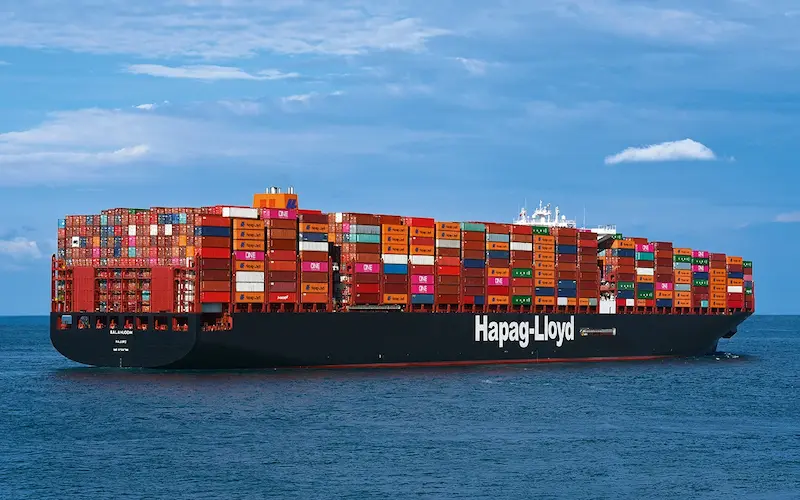15 Types of Shipping Container Units in Logistics- GoComet
The ocean moves over 90% of the world’s goods, and most of these sea shipments move in containers. To accommodate the wide variety of goods, there are different types of shipping containers, each used to serve a specific purpose.
These containers play an integral role in global trade and ensure that cargo makes it to its destination in one piece. Let’s take a look at some of the most commonly used types of shipping containers:
1. Dry storage container
Dry storage containers are also known as general-purpose containers and are the most widely used shipping containers. They are fully enclosed and have robust roofs, floors, and sidewalls.
These containers come in various sizes standardized by the ISO. Typically, their sizes are 20 ft, 40ft, and 10ft. Dry containers also come with specific adaptations, such as liner bags for shipping liquid bulk cargo.
2. Flat rack container
Flat rack containers have collapsible slides, which makes it possible to store a wide range of cargo. The sides of the container can be folded to make a flat rack. In these containers, the end walls are sturdy and stable enough to secure the cargo in place.
These shipping containers are ideal for oversized cargo such as construction materials, heavy machinery, vehicles, etc.
3. Open top container
Open-top shipping containers are built so that their top can be removed entirely to accommodate cargo of any height easily.
They are suitable for tall machinery or other bulky goods that cannot be loaded through the container’s door. In the case of such cargo, with the help of a crane or rolling bridge, goods can be directly loaded into the container from the top. These containers are available in 40′ and 20′ and have lashing rings installed. These rings are attached to the upper and lower side rails and corner posts to secure the cargo.
4. Tunnel container
As the name suggests, tunnel containers have doors on both ends. It facilitates easy and quick loading and unloading of cargo. They are instrumental in shipping steel or other heavy metals as the open doors allow more space.
Both ends of the shipping container have a robust locking mechanism and weather-tight seals to keep cargo protected during transit.
5. Open-side storage container
Open-side storage containers are provided with doors that can change into entirely open sides. They thus offer a much wider room for the loading of materials. The units are quite similar to the regular dry containers but what sets them apart is that their doors can open entirely on the side too.
These boxes typically are available in 20′ and 40′ and are used for goods that can’t easily pass through regular doors.
6. Refrigerated ISO containers
Refrigerated ISO containers are temperature-regulated shipping containers. A low controlled temperature is maintained in these containers. They are mainly used to transport perishables such as fruits, meat and vegetables, and pharmaceutical goods that require a temperature-controlled environment.
Also known as reefers, they usually come in 20’ and 40. They are commonly made from weathering steel known as ‘Cor-ten’ steel.
Must Read: Quarterly Region-Specific Report on Port Congestion – 2023!
7. Insulated or thermal containers
Thermal containers are storage units that allow regulated temperature control making it possible to maintain a higher temperature.
The material inside the shipping container is such that it can easily sustain high temperatures without getting damaged.
The units are equipped with electrical compliance to heat the air within the container. They are used for long-distance transportation of products such as foods, biological materials, pharmaceuticals, chemicals, etc.
8. Tanks
Tanks are primarily used to transport liquid materials in bulk. These containers are made of robust still or other anti-corrosive materials to ensure the durability and protection of the materials being transported.
9. Cargo storage roll container
These containers are foldable and specially made to transport goods in sets or stacks. Thick or strong wire mesh and rollers are used to make these units, facilitating easy movement of goods.
10. Half-height containers
As the name suggests, these containers are mostly made of steel half the usual full-sized containers’ height. They’re widely used to transport goods in bulk, such as coal, iron ore, stones, etc., which require easy loading and unloading.
As these containers have a low centre of gravity, they can better handle heavier loads than taller containers. This makes them suitable to withstand the harsh industrial environment.
11. Car carriers
Car carriers are container storage units specially built for transporting cars or vehicles over long distances. They are provided with collapsible sides that help a vehicle fit inside the containers without the risk of damage or moving from the spot while in transit.
12. Intermediate bulk shift containers
Intermediate bulk shift containers are storage shipping containers built solely for the intermediate shipping of goods.
They are designed to handle goods in bulk and are made specifically for shipping materials to a destination.
13. Drums
As the name suggests, drums are circular storage units made from steel, fibre, rigid plastic, lightweight metals, etc.
They are widely used for the bulk transport of liquid materials. They are smaller in size but occupy more space on a vessel due to their shape.
14. Special-purpose containers
These containers are made to meet specific purposes. These custom-made containers are used for high-profile services like the shipment of weapons and arson.
The material used in their construction depends on the purpose they need to cater to.
15. Swap bodies
Swap bodies containers are exchangeable units used for road and rail transport. Commonly used in Europe, they have a convertible top, which makes them suitable for shipping a wide variety of goods.
However, these units do not have upper corner fittings and are not stackable. Thus, they are restricted to land transportation only.
Track your shipping containers for free, track here.
For more information on supply chain-related topics, do check out our Freight Knowledge Center.
